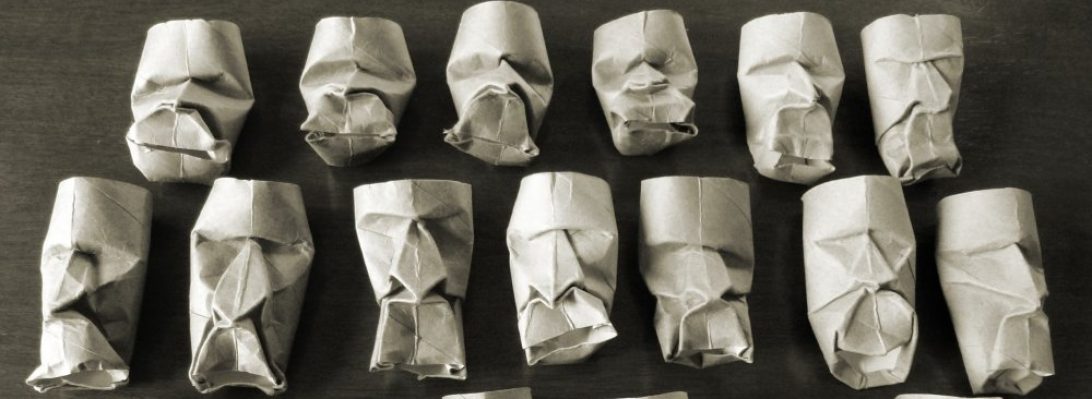With the development of origami design tools like Oriedta and Mu-Tsun Tsai’s astonishing “Box Pleating Studio”, origami design has in recent years gone through an explosion of complexity, innovation and artistry:

When I first saw Kimiro‘s new design for an Ammonite, I was astonished, then further amazed when he released the crease pattern – I knew I had to give it a try.
Ammonites are long extinct cephalopods (squiddy things) that lived in coiled shells – these shells are quite common fossils ranging from tiny (a few cm across) to massive (a couple of meters in diameter). Their closest living relative is the Nautilus I think. It is believed they, like the nautilus, could vary their buoyancy to control how deep they were in the ocean, and they probably had siphons that allowed them a little jet-propulsion.

Box pleating, by nature, results in blocky bases, the challenge is to make them feel rounded and organic. This model’s design has a good balance of fine detail and larger surface, and modelling and shaping it has taken me an age.
Initially I was sure the shell was fully closed 3D, but after posting some collapse and shaping progress photos on Origami Dan Discord, Kimiro himself popped into my DMs and showed me the back of his model – a half shell solved sooooo many problems. How amazing is it that in the age of the internet communication with the designer is actually possible. It continues to blow my mind how accessible origami legends are, and how helpful they are to noobs like me also.

I chose a lovely 45cm sheet of green/natural Damul matt Kraft paper (toying briefly with the idea of throwing shadow thai at it, but reasoned that I did not want a black shell or critter).
Laying in the grid was easy – finger pressure only (no bone-folded setting this time, as I wanted the creases to be as unobtrusive as possible), the CP is pretty simple, the shell spiral a lovely piece of geometry allowing a colour change.
Continue reading

















